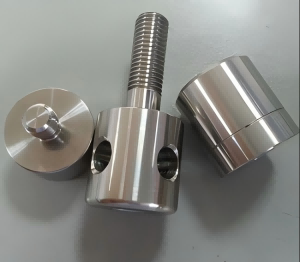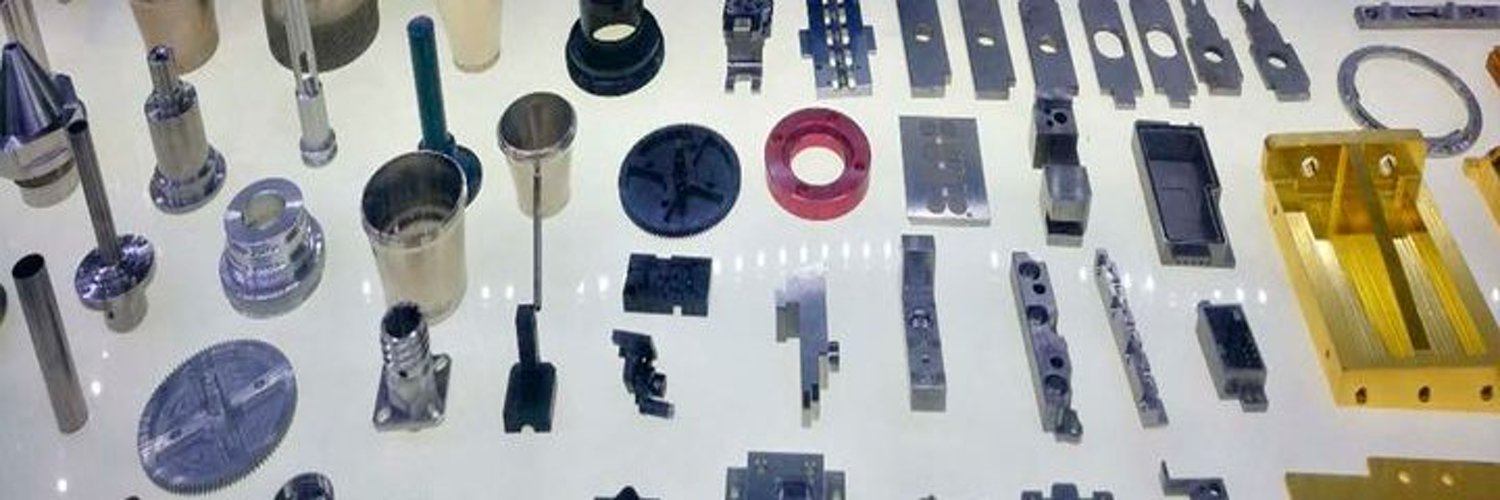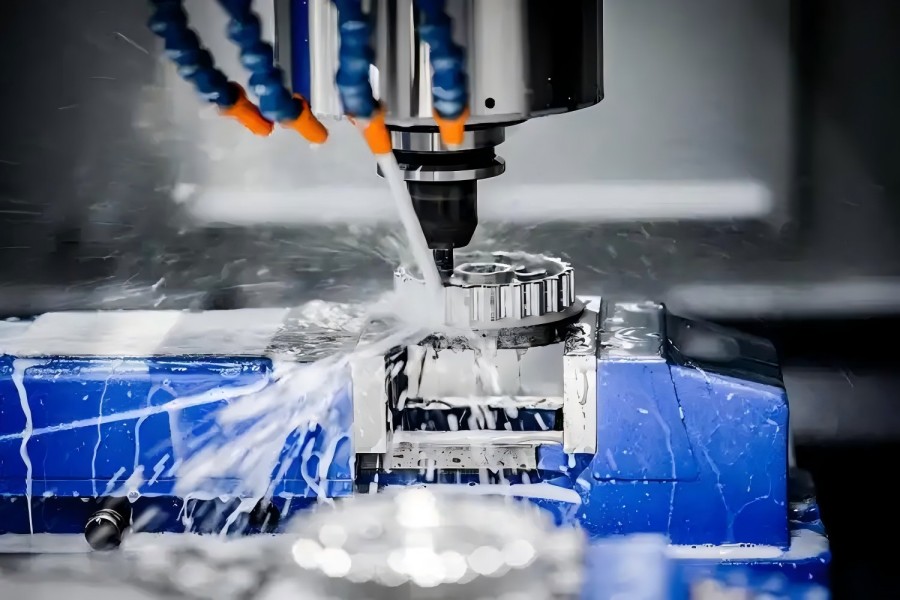News Categories
Contact Us
020-86988980
- Guangzhou Sinoth Import and Export Co., LTD
Tel: 020-8968-8980
Website:www.gzsynoth.com
Email: belinda@dginfa.com(24 hours online)
Phone: +86 189 2740 6786
Address: No 5, Jinshi Three Street, Shiling Town, Huadu District,Guangzhou City, Guangdong Province
News
Current Location:Home > News > News
How to improve the surface gloss of metal cnc machining?
Add Time:2025-03-28
In metal cnc machining, improving the surface gloss of the workpiece is an important link, which directly affects the appearance quality and market acceptance of the product. The following are some commonly used methods to improve the surface gloss of metal cnc machining metal workpieces:
First, mechanical polishing
A. Method Description:
B. Main points of operation:
Metal cnc machining select the appropriate polishing wheel and polishing fluid, according to the material and surface requirements of the workpiece to adjust.
Control the pressure and speed during the polishing process to avoid surface damage caused by excessive polishing.
After polishing should be cleaned and dried to remove residue and prevent reoxidation.
Second, chemical polishing
A. Method Description:
Chemical polishing is the use of chemical reactions to remove the oxide layer and other contaminants on the surface of the metal workpiece, thereby improving the surface gloss. Common chemical polishing methods include pickling, electrolytic polishing and so on.
B. Main points of operation:
Select the appropriate chemical polishing fluid to ensure that it has good corrosion and decontamination ability to the workpiece material.
Control the concentration, temperature and time of the polishing liquid to avoid excessive corrosion resulting in rough surface.
After polishing, it should be neutralized, cleaned and dried to remove residual chemical agents and prevent re-contamination.
Third. Electroplating
A. Method Description:
Electroplating is the deposition of metal ions on the surface of the metal workpiece to form a metal film, thereby improving the surface gloss and corrosion resistance. Common electroplating methods include chromium plating, nickel plating, silver plating and so on.
B. Main points of operation:
Select the appropriate plating solution and plating process to ensure uniform, dense and good gloss coating.
Control the current density, temperature and time during plating to obtain the desired coating thickness and gloss.
After electroplating, cleaning and drying should be carried out to remove the residual plating solution and prevent the coating from falling off.
Fourth, anodizing
A. Method Description:
Anodizing is the process by which a metal workpiece is placed in an acidic electrolyte and an oxide film is formed on its surface by applying an electric current. This layer of oxide film can not only improve the corrosion resistance of the workpiece, but also increase the decorative effect of the surface by dyeing or electrolytic coloring, thereby improving the gloss.
B. Main points of operation:
Select the appropriate electrolyte and anodic oxidation process to ensure that the oxide film is uniform, dense and has a good gloss.
Control the voltage, current density and time during anodizing to obtain the desired oxide film thickness and color.
After anodizing, cleaning and drying should be carried out to remove the residual electrolyte and prevent damage to the oxide film.
Fifth, spraying
A. Method Description:
Spraying is the spraying of paint on the surface of the metal workpiece to form a protective coating. This coating can not only improve the gloss of the workpiece, but also increase wear resistance and corrosion resistance. Common spraying methods include spray painting, powder spraying and so on.
B.Main points of operation:
Select the right paint and spray process to ensure that the coating is uniform, smooth and has a good gloss.
Control the pressure, speed and distance during the spraying process to obtain the desired coating thickness and gloss.
After spraying, it should be dried and cured to ensure that the coating is firmly attached to the surface of the workpiece.
Sixth. Other precautions
Before the surface treatment of metal cnc machining, the workpiece should be thoroughly cleaned and oiled to remove surface impurities and oil.
Choose the appropriate surface treatment method or combine a variety of methods according to the material and processing requirements of the workpiece.
Metal cnc machining strictly controls the parameters and conditions in the processing process to ensure the stability and consistency of the surface treatment.
Regular maintenance and maintenance of processing equipment and tools to ensure that they are in good working condition and extend their service life.
First, mechanical polishing
A. Method Description:
Mechanical polishing is to physically polish the surface of the metal workpiece through the use of grinding machines, polishing machines and other equipment to remove the surface burrs, roughness and oxidation layer, so that the surface is smoother, thereby improving the gloss.

B. Main points of operation:
Metal cnc machining select the appropriate polishing wheel and polishing fluid, according to the material and surface requirements of the workpiece to adjust.
Control the pressure and speed during the polishing process to avoid surface damage caused by excessive polishing.
After polishing should be cleaned and dried to remove residue and prevent reoxidation.
Second, chemical polishing
A. Method Description:
Chemical polishing is the use of chemical reactions to remove the oxide layer and other contaminants on the surface of the metal workpiece, thereby improving the surface gloss. Common chemical polishing methods include pickling, electrolytic polishing and so on.
B. Main points of operation:
Select the appropriate chemical polishing fluid to ensure that it has good corrosion and decontamination ability to the workpiece material.
Control the concentration, temperature and time of the polishing liquid to avoid excessive corrosion resulting in rough surface.
After polishing, it should be neutralized, cleaned and dried to remove residual chemical agents and prevent re-contamination.
Third. Electroplating
A. Method Description:
Electroplating is the deposition of metal ions on the surface of the metal workpiece to form a metal film, thereby improving the surface gloss and corrosion resistance. Common electroplating methods include chromium plating, nickel plating, silver plating and so on.
B. Main points of operation:
Select the appropriate plating solution and plating process to ensure uniform, dense and good gloss coating.
Control the current density, temperature and time during plating to obtain the desired coating thickness and gloss.
After electroplating, cleaning and drying should be carried out to remove the residual plating solution and prevent the coating from falling off.
Fourth, anodizing
A. Method Description:
Anodizing is the process by which a metal workpiece is placed in an acidic electrolyte and an oxide film is formed on its surface by applying an electric current. This layer of oxide film can not only improve the corrosion resistance of the workpiece, but also increase the decorative effect of the surface by dyeing or electrolytic coloring, thereby improving the gloss.
B. Main points of operation:
Select the appropriate electrolyte and anodic oxidation process to ensure that the oxide film is uniform, dense and has a good gloss.
Control the voltage, current density and time during anodizing to obtain the desired oxide film thickness and color.
After anodizing, cleaning and drying should be carried out to remove the residual electrolyte and prevent damage to the oxide film.
Fifth, spraying
A. Method Description:
Spraying is the spraying of paint on the surface of the metal workpiece to form a protective coating. This coating can not only improve the gloss of the workpiece, but also increase wear resistance and corrosion resistance. Common spraying methods include spray painting, powder spraying and so on.
B.Main points of operation:
Select the right paint and spray process to ensure that the coating is uniform, smooth and has a good gloss.
Control the pressure, speed and distance during the spraying process to obtain the desired coating thickness and gloss.
After spraying, it should be dried and cured to ensure that the coating is firmly attached to the surface of the workpiece.
Sixth. Other precautions
Before the surface treatment of metal cnc machining, the workpiece should be thoroughly cleaned and oiled to remove surface impurities and oil.
Choose the appropriate surface treatment method or combine a variety of methods according to the material and processing requirements of the workpiece.
Metal cnc machining strictly controls the parameters and conditions in the processing process to ensure the stability and consistency of the surface treatment.
Regular maintenance and maintenance of processing equipment and tools to ensure that they are in good working condition and extend their service life.



